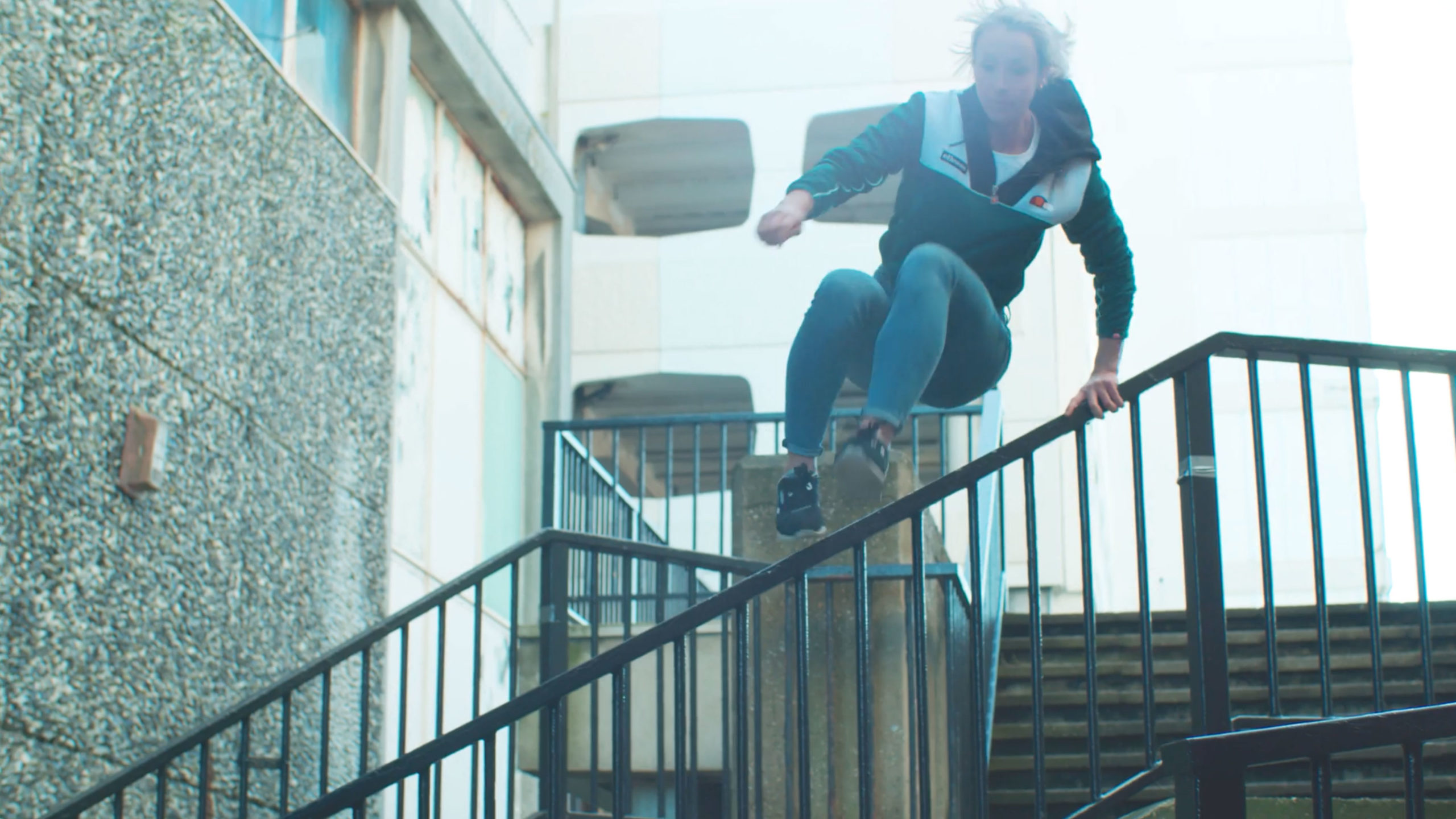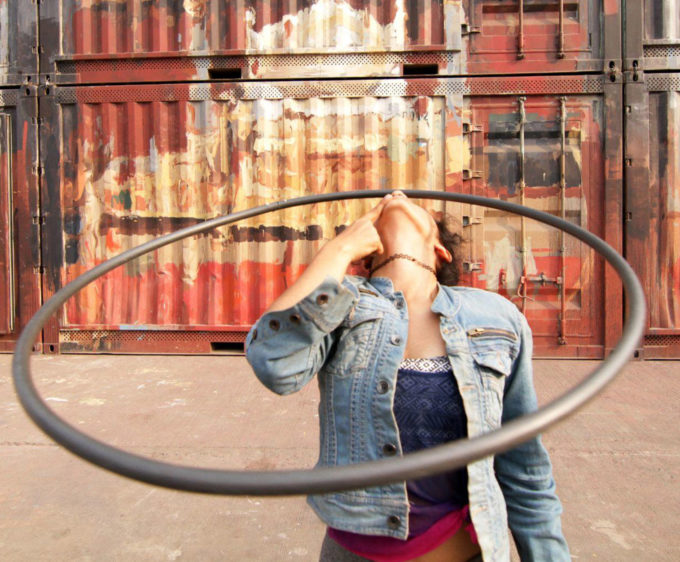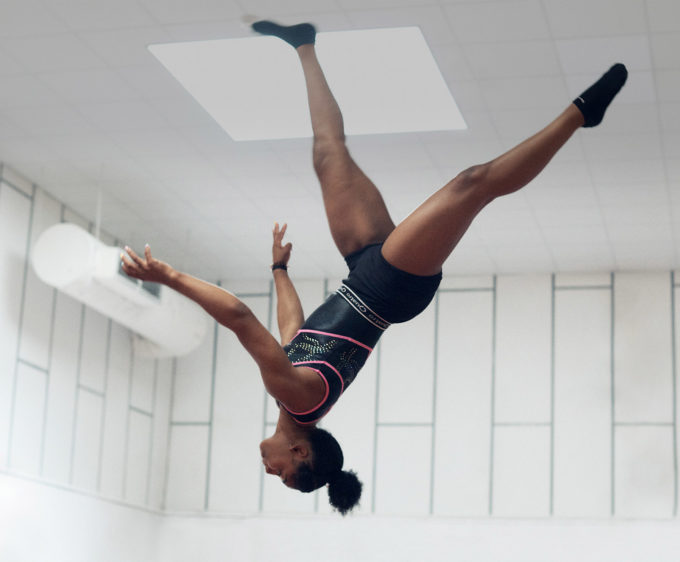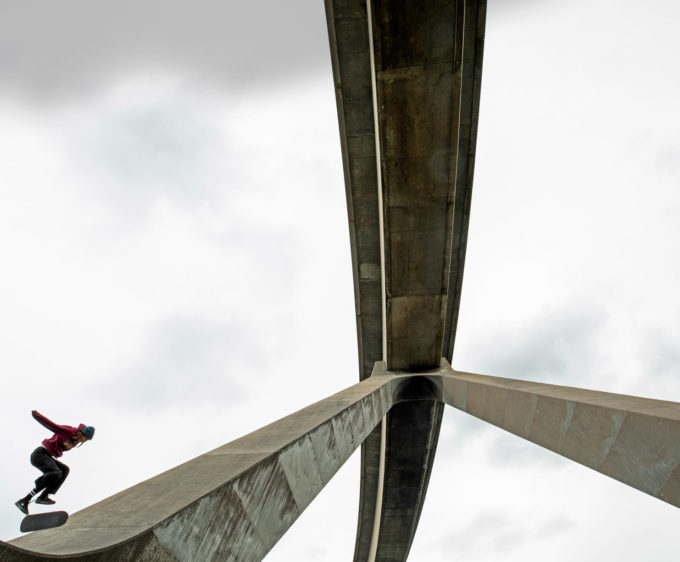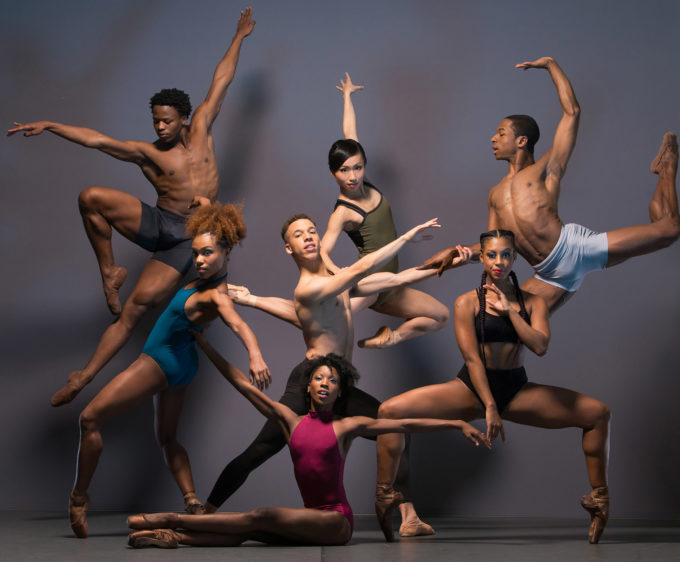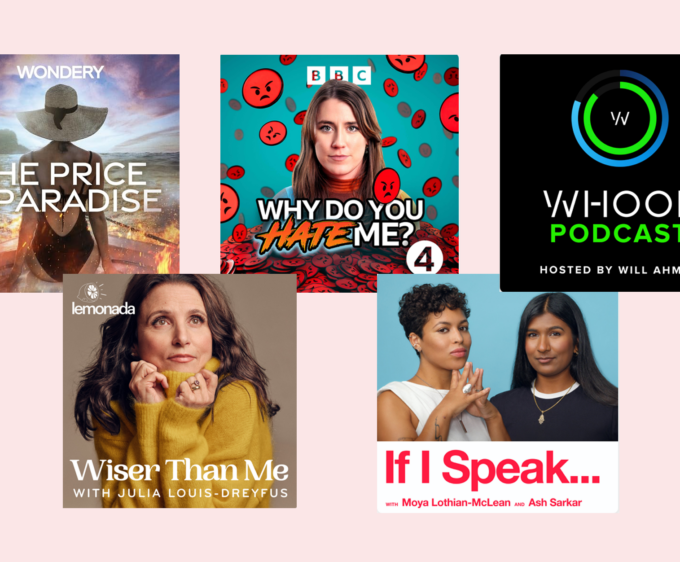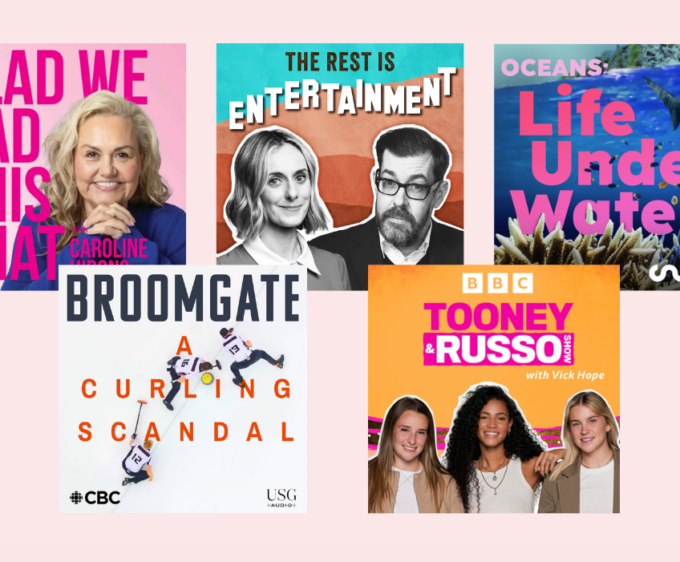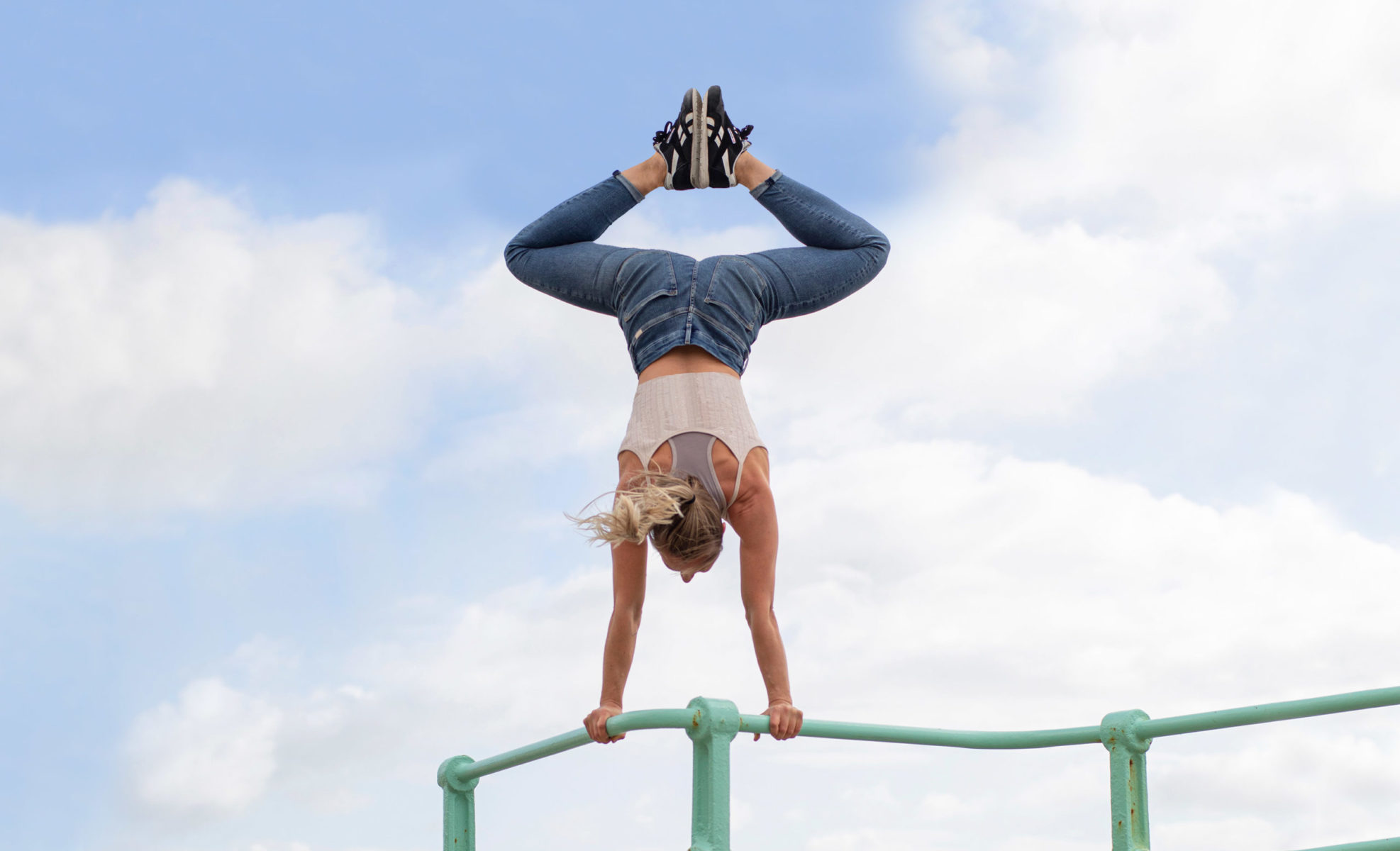
A Leap Of Faith
“I was like Bambi on ice trying to jump again.” How parkour athlete and freerunner Lynn Jung bounced back from injury and changed her lifestyle in the process
By Ellie Ross
Photography by Kie Willis
They vault over railings and bounce off walls, before leaping to improbable heights and landing, cat-like, on their feet. To move off again, they roll onto their shoulders on the concrete, popping up and pushing off in one smooth motion. They flip, float and fly through the air, leaving only dust in their tracks.
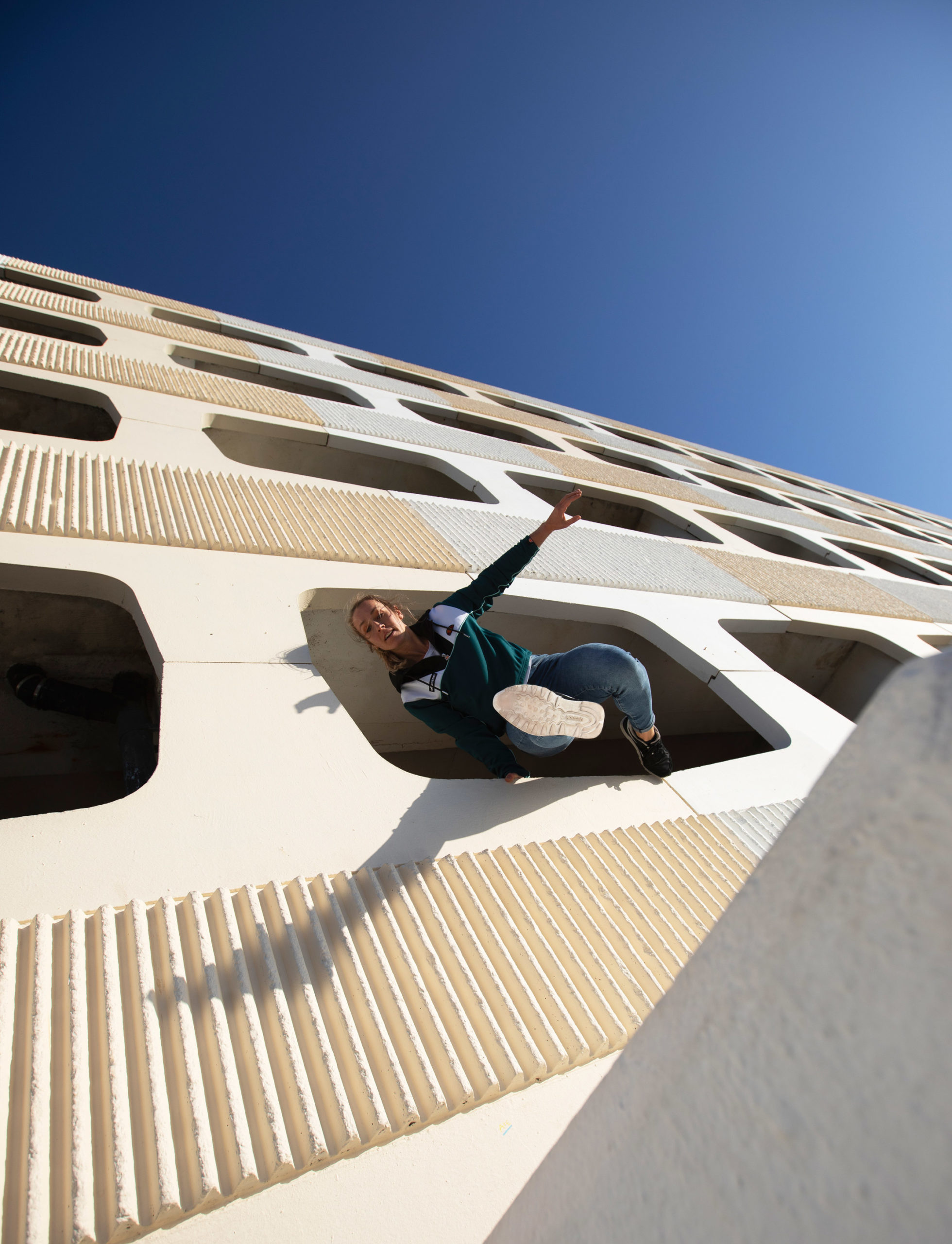
This is parkour; an underground activity that started in the suburbs of Paris in the 1980s and has since swept through Europe, fuelled by the internet, music videos and films. It was originally called ‘art du déplacement’ but later changed its name to ‘parcours,’ meaning ‘route’ or ‘course’ in French. Also known as ‘freerunning,’ it’s defined as the discipline of moving “freely over and through any terrain using only the abilities of the body.” In 2017, the UK became the first country in the world to recognise parkour as a sport.
Parkour attracts mostly male participants; and yet, a small number of female athletes are rising through the ranks. Lynn Jung is one of them. Based in Brighton, the 31-year-old was at the top of her game in 2016; signed by multiple sponsors, she was the first female to join Storm Freerun team. Regular competitions took her all over the world, including Santorini, where she won Best Female Freerunner at Red Bull Art of Motion. Lynn was still reeling at the accomplishment of turning her hobby into a career, when a setback struck. In 2017, she was diagnosed with a rare stress fracture in her tibia. What had started out as shin splints had developed into a potentially career-ending injury for someone who relied upon jumping on hard surfaces to earn a living.

“After the diagnosis, I felt lost,” Lynn says. “As the fracture was so rare, I didn’t know whether I was going to heal, or how it would affect my job. I’d moved to England to make parkour my career, and all my new friends were involved in parkour. My whole world revolved around the sport, and not being able to do it anymore made it feel like my life was crumbling around me. It was an identity crisis.”
At her lowest, Lynn was in so much pain that even walking with a leg brace was a struggle. Despite a six-month rest – including daily ultrasound treatment and vitamin D supplements – an X-ray showed little improvement. “I was sliding towards depression,” she says. “Thankfully my boyfriend suggested yoga, to help me sleep. When you’re in a place like that, you have to find something that pulls you out of your hole. For me that was yoga, then hand balancing.”
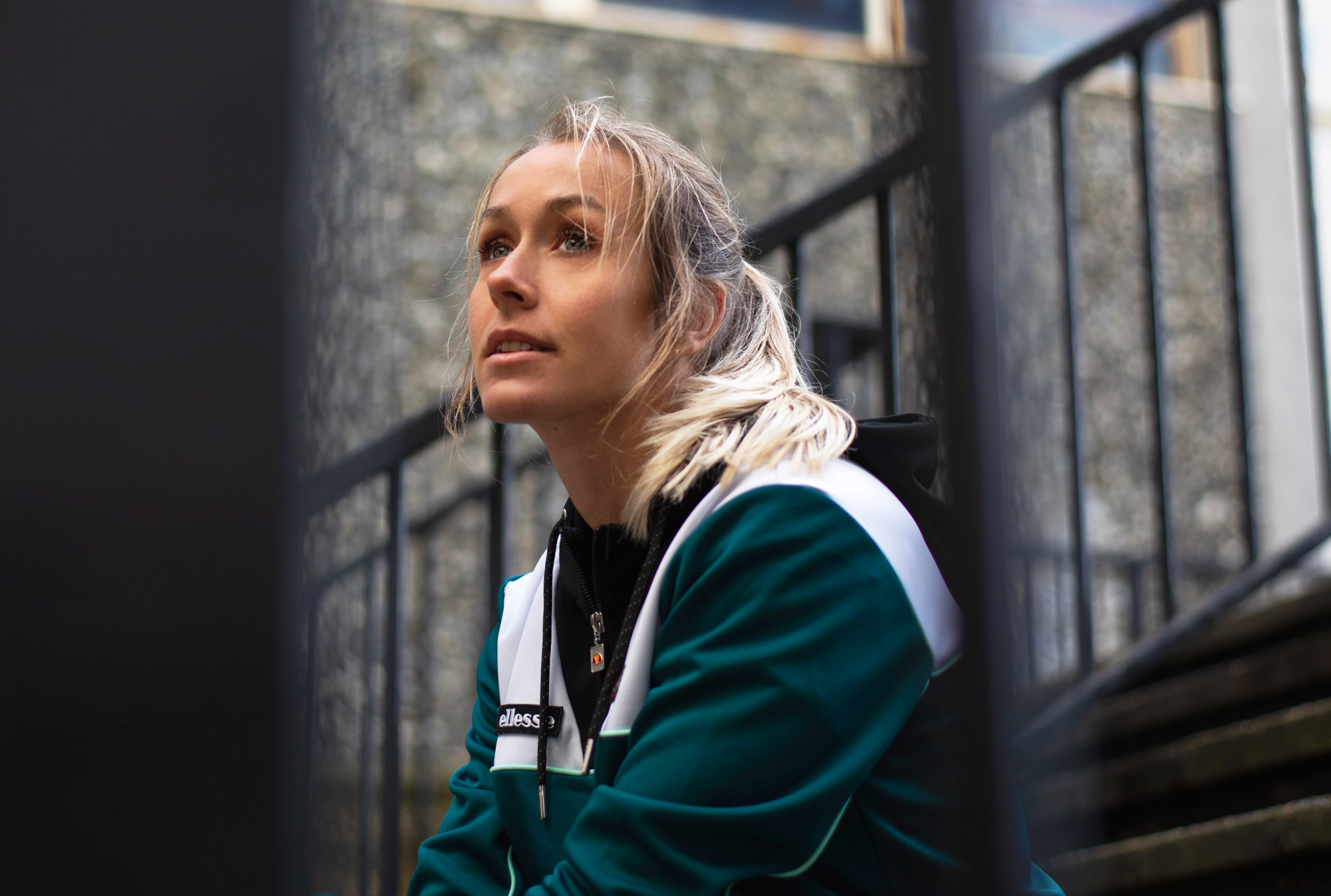
This was the crucial moment for Lynn. Instead of focusing all her attention on parkour, she began to direct it towards whole body conditioning, and movement as a whole. “Previously I’d only trained for parkour by doing parkour. Nothing else seemed useful. But since I wasn’t allowed to do any high-impact sports like jumping because of my injury, I started doing upper body workouts and strength training in the gym. I started lifting, swimming, running and cycling. I changed my whole attitude and realised that I enjoy doing many different types of movement. Implementing them into my training is beneficial not only to condition your body for parkour, but for general wellbeing.”
She adds: “Looking back, I learned so much from the injury. I’m okay at dealing with failure now, which makes you a more resilient person.” Lynn has also changed her lifestyle to include more non parkour related activities. “I’d never previously gone out with friends unless it was to do with parkour. I would never grab a coffee with them or go to the beach. My injury taught me to take time to enjoy other things. I got into yoga and diving, which I now really enjoy doing and am super grateful for.”
The training has paid off and Lynn is now going from strength to strength. But the journey hasn’t been easy. Constant pangs of pain made Lynn doubt whether the bone had healed, and she had lost a lot of leg strength after two years out of the sport. “I was like Bambi on ice trying to jump again,” she recalls. “I had to do a lot of work, but was determined to get physically strong and had a good team around me.” Yet it was the psychological aspect of the sport that presented the biggest challenge. “Parkour comes down not only to physical ability but to whether you’re mentally strong,” she says. “You have to face fears, which requires mental strength, and I’d completely lost that. Your confidence in your ability is the first thing to go – even before your physical skills. I’m still working on getting my mental strength back to where it once was.”
For Lynn, rationalising plays a major role in overcoming her fears. Before each jump, she’ll go through a checklist of all the potential pitfalls, such as whether a surface is slippery or how tired she’s feeling on the day. The whole process can take up to an hour. “If you go through the list and there’s no reason not to do the jump, then you have to push yourself to do it. And you need to fully commit. But if you’re scared to do a jump because you’re not sure if you can physically do it, it’s time to stop.”
SMOOTH MOTION

Now, Lynn’s greatest fear is picking up another career-ending injury. “With that comes the worry that you might not feel the same passion for your sport after a long break from it,” she adds. “Parkour has the potential to ruin my day if I’ve gone out training with high expectations and then roll my ankle. But it can also completely turn my day around, make me feel positive and enjoy life. I feel lucky to have found something that I’m so passionate about.”
One aspect of parkour seems glaringly obvious: it’s still a male-dominated sport. Though there are no official stats, in Lynn’s experience, there’s around one woman for every 100 men. “It’s a sport with a lot of male attributes, like strength, speed, the outdoors and dirty walls” she explains. “Girls could be put off by this if they prefer a safe environment to train in.” Fewer women competing means they generally win less prize money, and Lynn believes female parkour athletes are still underrepresented in the media.
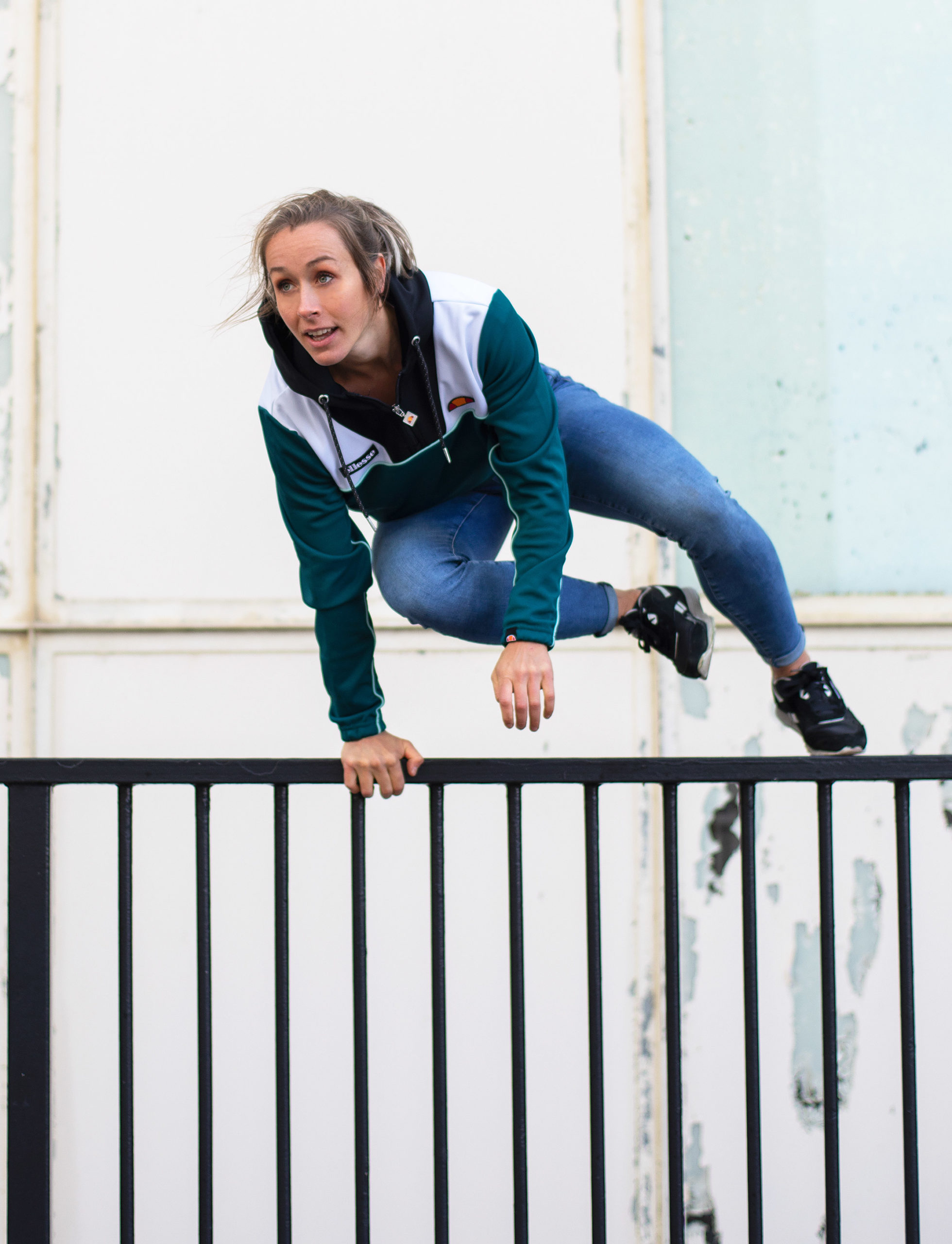
But being a woman in a male-dominated sport has also allowed Lynn to open up the conversation on how women need to train differently to men to suit their bodies. “Last year I started having irregular periods and then completely lost them,” she says. “Many female athletes don’t get periods anymore but that’s not normal and it should be talked about.” For athletes, one of the causes of this condition (called amenorrhea) is that their bodies are in a high stress mode, which is not conducive to pregnancy, so the body stops producing pregnancy hormones. Since becoming aware of the issue, and regaining her periods, Lynn trains differently. “I’m now aware of the two phases in my cycle. In the first stage you feel stronger, can take the workload and don’t need as many calories. In the second phase, you need to train slower, eat more, and take care of your body. It’s an experiment but it’s working for me so far.”
Lynn’s goals are now set on keeping healthy. “I also hope to inspire people,” she says. “When I started parkour there were only a couple of women to look up to. Times are changing and there are more women in the sport now. The next generation will have twenty women to look up to. We’re still a minority, but it’s getting better.”

Film, Creative Direction & Editorial Design Root, Director of Photography Kie Willis.
